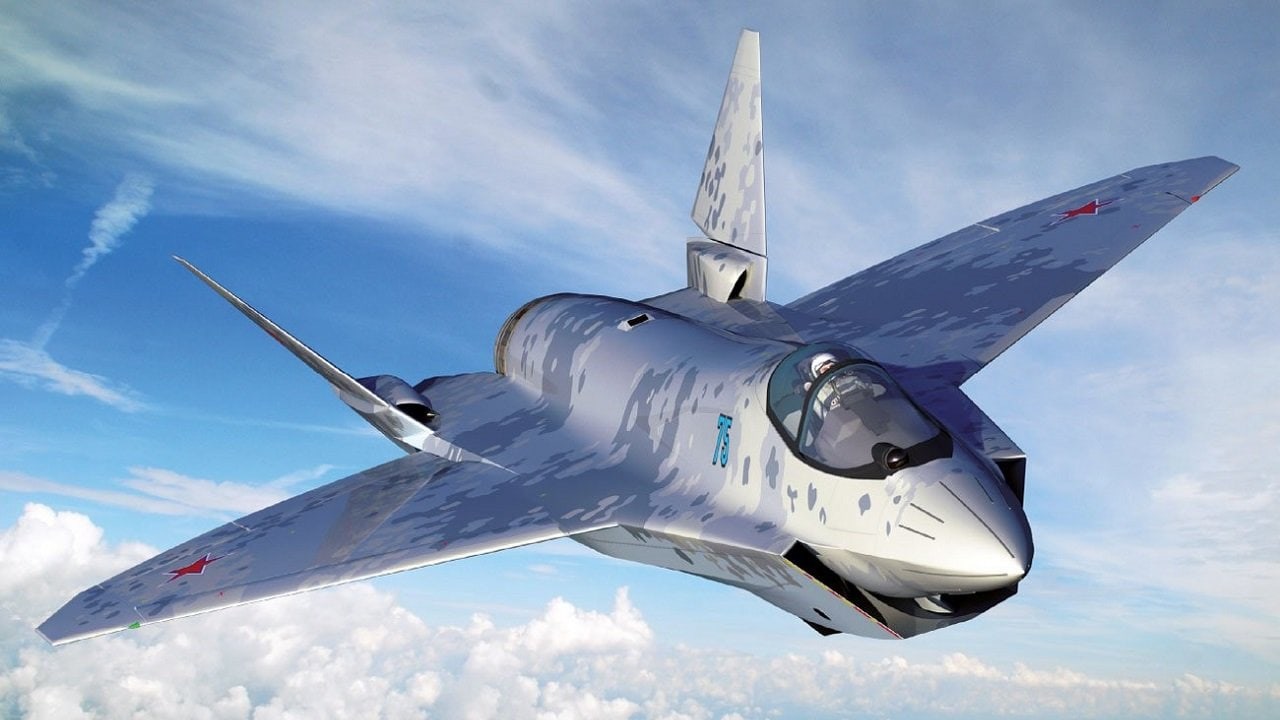Putin Is Plotting: The Russian Air Force Is Dreaming Up a Comeback
Russia is expanding its production of the Sukhoi Su-57 fifth-generation stealth fighter at the Komsomolsk-on-Amur Aviation Plant (KnAAZ) to address the limited number of these aircraft in service.
Summary and What You Need to Know: Russia is expanding its production of the Sukhoi Su-57 fifth-generation stealth fighter at the Komsomolsk-on-Amur Aviation Plant (KnAAZ) to address the limited number of these aircraft in service.

-Amidst significant losses in its combat aircraft fleet during the ongoing war in Ukraine, Moscow is also increasing domestic drone production, potentially aiming for 32,000 drones annually by 2030.
-With drones being easier and quicker to produce than manned aircraft, Russia could shift its military aviation focus toward a larger fleet of unmanned systems, raising questions about the future of its air combat strategy.
From Stealth Fighters to Drones: Russia’s Evolving Air Strategy
Earlier last week, it was reported that Russia is now expanding its production capabilities for the Sukhoi Su-57 (NATO reporting name Felon) fifth-generation stealth fighter, aiming to increase output at the Komsomolsk-on-Amur Aviation Plant (KnAAZ). Russia currently operates fewer than three dozen of the Su-57s, and due to the limited number of aircraft in service, it hasn't been widely employed in combat operations.
The Kremlin aims to rectify that situation by ramping up its aircraft production.
"Our objective is to bring this facility online as quickly as possible," said Alexander Pekarsh, director of the UAC branch at KnAAZ. "The expansion of the plant's capacities will also include the construction of a third phase of galvanic production, supported by state investment, along with a major reconstruction of other facilities."
It isn't just the Su-57 that Moscow lacks. Russia has seen a significant number of combat aircraft destroyed in the ongoing war in Ukraine. In April, it was reported that it had lost at least 100 warplanes, or roughly 10% of its entire fleet. Though smaller than the percentage of tanks that have been lost, it is still a sizeable number given that it will take a considerable amount of time to replace those aircraft.
Drone Instead of Warplanes
As Russia struggles to replace its aerial losses, it has also announced that is expanding its domestic drone production.
"We are consistently, systematically and purposefully developing this high-tech industry, and making steady headway on the path of import substitution. More and more production facilities are opening that have an increased percentage of import-substituted parts and units. This process will continue," Kremlin Spokesman Dmitry Peskov told state media outlet Tass on Thursday.
Moscow has had to turn to Iran to supply drones and other unmanned aerial systems (UAS) to aid its war effort. As a result, the Russian military has been increasingly expanding its domestic production.
Both Kyiv and Moscow have employed drones to counter tanks and other vehicles on the frontlines while launching the unmanned systems at the infrastructure and other targets deep into the other's territory. It was just weeks back that Ukraine launched more than a dozen drones at Moscow, although the Kremlin claimed all were shot down.

Russia has employed Iranian-made drones to target Ukraine's power grid over the past two years. If domestic production is ramped up, some experts have warned that Russia could employ the drones to turn the tide in its favor. Both sides are now producing hundreds of drones daily – far more than is possible with manned aircraft – but the Moscow seeks to increase that number significantly.
Earlier this year, the Kremlin announced a goal of producing as many as 32,000 drones annually by 2030.
Thus while the Russian Aerospace Forces are unlikely to see a significant increase in the number of Su-57s in service, the Russian military could have a massive fleet of ever-more sophisticated unmanned systems. The question will be whether the fighting will continue at that point – but even when the dust settles, the future of Russian military aviation may be smaller and cheaper unmanned systems.

Author Experience and Expertise: Peter Suciu
Peter Suciu is a Michigan-based writer. He has contributed to more than four dozen magazines, newspapers, and websites with over 3,200 published pieces over a twenty-year career in journalism. He regularly writes about military hardware, firearms history, cybersecurity, politics, and international affairs. Peter is also a Contributing Writer for Forbes and Clearance Jobs. You can follow him on Twitter: @PeterSuciu. You can email the author: [email protected].
Image Credit: Creative Commons and/or Shutterstock.


